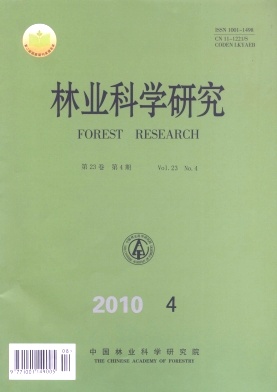Hotspots from Satellite Monitoring and Forest Fire Weather Index Analysis for Southwest China
-
1.
Research Institute of Forest Ecology, Environment and Protection,Chinese Academy of Forestry, Key Laboratory of Forest Protection,State Forestry Administration, Beijing 100091, China
-
Abstract
Data of the hotspots in 2005—2007 and related information were provided by Forest Fire Monitoring Center of State Forestry Administration. Each component index of Forest Fire Weather Index (FWI) system was calculated base on the daily observation data of thirty-four weather stations in the key research areas. The results showed the hotspots in 2005—2007 were mainly distributed in Yunnan, Guangxi and south-western Guizhou, in which 44.6 percent of the hotspots might be caused by wildfires. The fires occurred in grassland, scrubland, forest and the other lands, which included prescribed burning. A large number of fires used for agriculture distributed in southwestern and southern Yunnan Province, which accounted for 30.1 percent of all hotspots. Fire occurred mainly in the period of November to May, in which the fires in January to May accounted for 77.6 percent of all hotspots in southwestern China. Forest fires mainly occurred in eastern and northwestern Yunnan, southeastern Guizhou and most parts of Guangxi. The number of hotspots was closely related to the changes of humus moisture code (DMC) and drought code (DC) of the region. In fire seasons, there were high DMC and DC values and much more hotspots and wildfires. There was a significant correlation between FWI value and the number of hotspots, which indicated that FWI system could be applied to the southwestern China. Component indexes of FWI system were good indicators for the fires danger rating. Based on FWI system component indexes of the kew research area, the paper defined the forest fire danger rating and their corresponding threshold of all component indexes. FWI ranges for low, moderate, high, very high, and extreme fire danger classes were created as follows: 0 - 1.2,1.3 - 5.0,5.1 - 12.0,12.1 - 25.0,25.1+. And the number of days with each fire danger rating class accounted for separately 41.0%, 23.6%, 21.8%, 11.2% and 2.4% respectively. To strengthen the fire sources management was an important and effective measure to reduce forest fires, since there were lots of man-made fire source and fires for agricultural use.
-

-
References
|
[1]
|
吕学东,顾清源,谌贵瑚.四川省森林火险预报系统[J].四川气象,2006,26(3):23-25
|
|
[2]
|
王艳霞,周汝良,何 强.云南省森林火险等级预报系统[J].山东林业科技,2007(3):13-15
|
|
[3]
|
牛若芸,翟盘茂,佘万明.森林火险气象指数的应用研究[J].应用气象学报,2007,18(4):479-489
|
|
[4]
|
田晓瑞.利用Keeatch-Byram干旱指数预测森林火险[J].火灾科学,2003,12(3):151-155
|
|
[5]
|
Countryman C M. Rating fire danger by the multiple basic index system [J]. Journal of Forestry, 1966,64:531-536 |
|
[6]
|
Merrill D F, Alexander M E. Glossary of forest fire management terms , 4th ed. National Research Council of Canada, NRCC No. 26516, Ottawa, 1987 |
|
[7]
|
田晓瑞,McRae D J, 张有慧.森林火险等级预报系统评述[J].世界林业研究, 2006, 19(2):39-46
|
|
[8]
|
Amiro, B D, Logan K A, Wotton B M, et al. Fire weather index system components of large fires in the Canadian boreal forest [J]. International Journal of Wildland Fire, 2004, 13: 391-400 |
|
[9]
|
Flannigan M D, Amiro B D, Logan K A, et al. Forest fires and climate change in the 21st century [J]. Mitigation and Adaptation Strategies for Global Change, 2005, 11(4): 847-859 |
|
[10]
|
Palheiro P, Fernandes P A, Cruz M G. A fire behavior-based fire danger classification for maritime pine stands: comparison of two approaches [J]. Forest Ecology and Management,2006, 234(S1): S54 |
|
[11]
|
杨伶俐,李小娟,王 磊,等.全球气候变暖对我国西南地区气候及旅游业的影响[J].首都师范大学学报:自然科学版,2006,27(3):86-89
|
|
[12]
|
董谢琼,段 旭. 西南地区降水量的气候特征及变化趋势[J]. 气象科学, 1998,18(3): 239-247
|
|
[13]
|
郑焕能,贾松青,张阳武. 论控制西南林区大火的措施[J]. 森林防火,1996(1):8-10
|
|
[14]
|
Turner J A, Lawson B D. Weather in the Canadian Forest Fire Danger Rating System: A user guide to national standards and practices . Can For Serv, Pac For Res Cent, Inf Rep BC-X-177. Victoria, BC, 1978 |
|
[15]
|
Canadian Forest Service. Tables for the Canadian Forest Fire Weather Index System . 4th edition. Technical Report 25. 48 p. Ottawa, 1984 |
|
[16]
|
Van Wagner C E. New development in forest fire danger rating . Canada Department of Fisheries and Forestry. Canadian For Ser Inf Rep PS-X-19. Ottawa, 1970 |
|
[17]
|
Van Wagner C E. Development and Structure of the Canadian Forest Fire Weather Index System . Can For Serv, For Tech Rep 35 p. Ottawa, 1987 |
-
-
Proportional views

-





 DownLoad:
DownLoad: